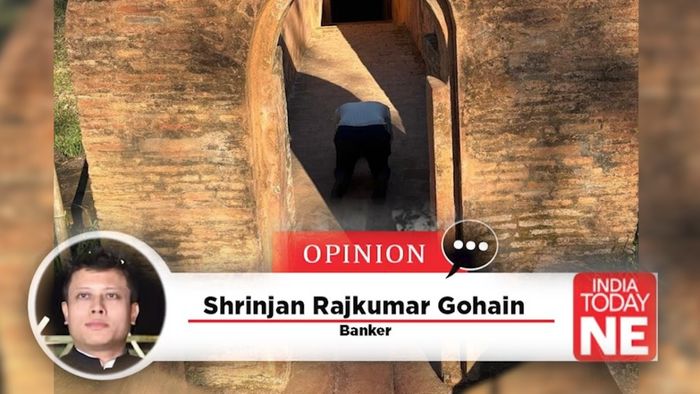Return to the royal hills: A living link to 600 years of Ahom glory
In a poignant bridge between ancient royalty and modern heritage, Shrinjan Rajkumar Gohain, a direct descendant of the Ahom dynasty and a former Indian chess player, visited the newly inscribed UNESCO World Heritage Site of Charaideo Moidams this week during World Heritage Week celebrations. His presence offered a living link to one of Asia’s most enduring kingdoms, which ruled northeastern India for nearly 600 years.

- Nov 22, 2025,
- Updated Nov 22, 2025, 9:06 AM IST
In a poignant bridge between ancient royalty and modern heritage, Shrinjan Rajkumar Gohain, a direct descendant of the Ahom dynasty and a former Indian chess player, visited the newly inscribed UNESCO World Heritage Site of Charaideo Moidams this week during World Heritage Week celebrations. His presence offered a living link to one of Asia’s most enduring kingdoms, which ruled northeastern India for nearly 600 years.
Gohain traces his lineage directly to the Tungkhungia branch of the Ahom royal family. He is a sixth-generation descendant of Swargadeo Rajeswar Singha (r. 1751–1769), seventh-generation from Swargadeo Rudra Singha (r. 1696–1714), and eighth-generation from Swargadeo Gadadhar Singha (r. 1681–1696), three pivotal monarchs who expanded the kingdom, fortified its defences against Mughal invasions, and patronised a golden era of art, architecture, and administration.
Walking amid the verdant, pyramid-like burial mounds that dot the Patkai foothills, Gohain described the experience as “a deeply personal homecoming, treading the very earth where my ancestors were laid to rest with reverence and ritual.” He emphasised that the Moidams embody “not merely royal tombs, but a profound civilizational testament, a unique fusion of Tai-Ahom shamanistic traditions and later Hindu influences that deserves enduring global stewardship.”
Often called the “Pyramids of Assam,” the Charaideo Moidams represent the spiritual and political heart of the Ahom kingdom, founded in 1228 by Chao Lung Siu-ka-pha. The site’s 90 meticulously preserved royal mounds, vaulted brick chambers topped with earthen hemispheres, house the remains of kings, queens, and nobles, interred alongside treasures, weapons, elephants, and even sacrificed attendants in earlier centuries. This mound-burial system stands as a rare surviving example of its kind in mainland Southeast Asia and the Indian subcontinent.
Inscribed as India’s 43rd UNESCO World Heritage Site in July 2024, and Northeast India’s first in the cultural category, Charaideo continues to face challenges from erosion, vegetation overgrowth, and climate impacts despite enhanced conservation efforts post-recognition.
“Heritage is alive only when we actively preserve it for tomorrow,” Gohain reflected. “My visit is not about privilege of bloodline alone; it is a call to collective responsibility. These silent mounds speak to millions of Assamese and Ahom people worldwide about resilience, identity, and the unbroken thread of history.”